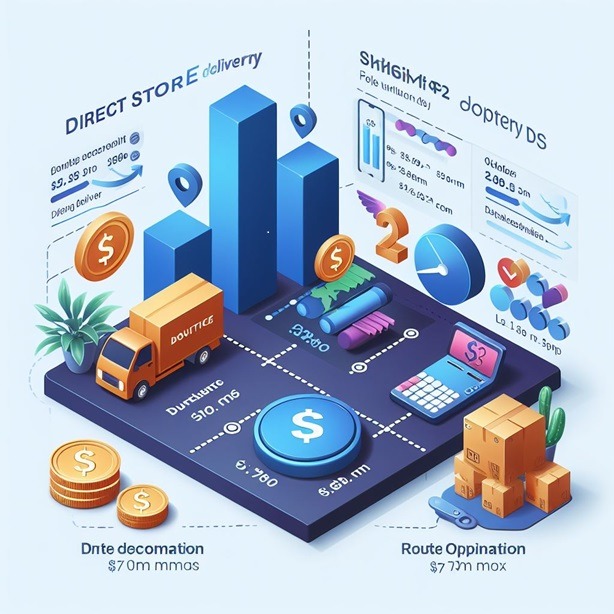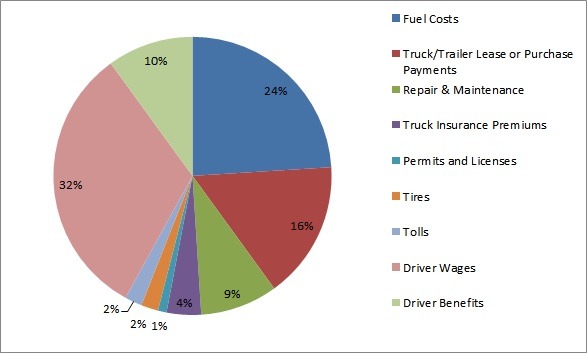
Optimizing DSD Routes: An Strategic Approach for Efficiency and Sustainability
Direct Store Delivery (DSD) is a distribution method that delivers products directly to stores, bypassing distribution centers. This method offers several advantages, including fresher products, better control over the delivery process, improved relationships with retailers, and an excellent ROI. However, Optimizing DSD Routes is essential to reduce costs and fuel consumption while ensuring timely deliveries. In this article, I present some strategies for planning and Optimizing DSD Routes.
Understanding the Value of DSD
DSD is particularly beneficial for perishable goods like dairy and snacks, which require frequent deliveries to maintain freshness. DSD can significantly impact a business’s bottom line by reducing storage time and minimizing product loss. However, managing complex delivery routes and tight delivery windows requires substantial resources, both in terms of transportation and labor costs.
Cost Impact of transportation in Optimizing DSD Routes
Transportation can account for up to 30% of the total cost in a DSD operation. The graph below shows the main components of the transportation cost.

Optimizing routes can significantly reduce these costs.
Empty miles:
Studies show that DSD deliveries can have up to 30% empty miles, meaning vehicles travel without product. This translates directly to wasted fuel and increased emissions. As a reference, studies show that a 10% reduction in fuel consumption can translate to substantial cost savings over time, especially with fluctuating fuel prices. Route optimization can drastically cut down on empty miles. Here’s how to tackle them:
- Multi-stop route planning: Software can intelligently group deliveries into efficient sequences, reducing empty miles between stops.
- Order consolidation: Encourage stores to consolidate orders to minimize delivery frequency.
- Strategic backhauls: Utilize return trips to pick up unsold goods or transport materials for recycling.
The Role of Technology in Route Optimization
Modern route optimization software takes the guesswork out of DSD routes. These tools consider a multitude of factors, including:
- Traffic patterns: Avoid rush hour congestion and optimize delivery times.
- Delivery windows: Ensure timely deliveries while respecting store schedules.
- Vehicle capacity and type: Match the right vehicle to the delivery load, reducing empty miles.
- Driver preferences and skills: Optimize routes based on driver experience and location.
- Real-time data: Account for unexpected delays and adjust routes accordingly.
By processing this data, route optimization software constructs efficient delivery sequences, significantly reducing travel distances and, importantly, fuel consumption, thereby contributing to a greener environment.
Strategies for Optimizing DSD Routes
Leveraging AI and Data Analytics: Artificial intelligence (AI) can process sales data to predict product demand, ensuring that stores have the right items to meet customer needs. AI can also optimize routes by considering traffic conditions, delivery windows, and product availability, reducing delivery times and fuel consumption.
Eco-friendly Practices: In 2024, sustainability will be a driving force behind DSD trends. Expect more eco-friendly packaging and streamlined supply chains designed to reduce carbon footprints.
GPS Tracking and Real-Time Adjustments: GPS tracking and maps help companies track the real-time locations of their delivery fleet, ensuring maximum productivity and the ability to make on-the-fly adjustments to routes as needed.
Asset Tracking: Advanced tracking abilities help identify the location of assets such as trucks and pallets, improving efficiency and preventing theft.
Case Studies of Success
A beverage company using AI-powered DSD solutions optimized its routes and reduced delivery times by 10%. Similarly, a grocery retailer leveraged these solutions to predict product demand at each store, enhancing profitability.
Conclusion
Optimizing DSD routes is not just about cutting costs and saving fuel; It is about embracing a sustainable model that meets today’s environmental and economic challenges. By leveraging technology and adopting eco-friendly practices, businesses can ensure that their DSD operations are efficient, cost-effective, and sustainable. This article has provided an overview of strategies for optimizing DSD routes. For companies looking to implement these strategies, staying informed about the latest technological advancements and sustainability trends that can impact DSD operations is essential. Laceup DSD solutions are aligned with rout optimization. To learn more about our solutions, click on the link below.
I hope this article has been helpful to you. I will continue to post information related to warehouse management, distribution practices and trends, and the economy in general. Our channel has a lot of relevant information. Check out this video on a Demo of our Route Accounting Software.
.


Sorry, the comment form is closed at this time.